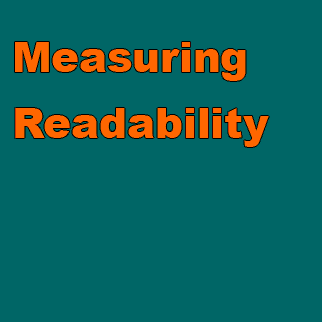


|
How I test readability |
The Flesch-Kincaid Reading Ease score indicates how easy a text is to read. Click graph for larger view. |
I use the Flesch-Kinkaid Readability Index. It measures the length of the sentences and the number of syllables per word, resulting in a school grade score. A recent client told me their message wasn't getting across; I put some paragraphs from their Web site into the Index and it came out 26th grade: you needed three PhD's to comprehend their text. If you want it said simply enough so that your customers can understand it, I'm your man. How to measure your readability:
|
||
A high Reading Ease score implies an easy text. Comic books typically score around 90 while legalese can get a score below 10. The Flesch-Kincaid Grade Level |